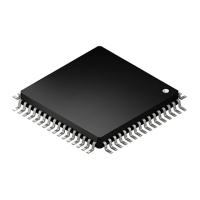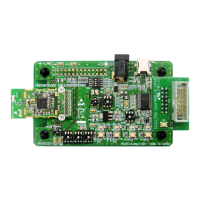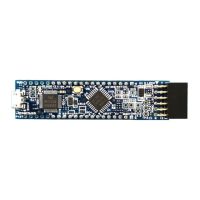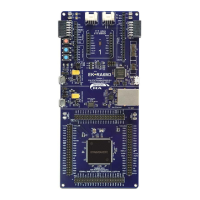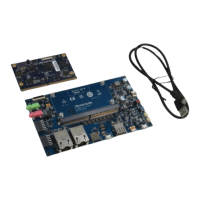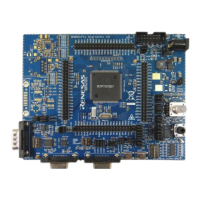of 58
Jan.20.22
3.3.5 Setting a Serial Programming Security ID
This setting is to prevent to write malicious program or tamper the program by an unauthorized person.
Serial programming security ID is deployed at 0xD6 to 0xE5 of the internal flash memory.
On starting debugger, id certification is done, if it doesn't match, you can't debug. And If you write this ID on
using memory panel, you can't debug the chip anymore.
The setting "0xFFFFFFFFFFFFFFFFFFFF", in which the value at all addresses is "0xFF", can be set.
The way to set serial programming security ID is below.
• Embed serial programming security ID by user program.
You can embed serial programming security ID to address 0xD6 to 0xE5 on user program.
For example if the serial programming security ID shown in is embedded as follows, the serial
programming security ID set by the debugger is ″0123456789ABCDEF1234556789ABCEF0″ (not case-
sensitive). *
1
Table 3-2 Example of Serial Programming Security ID Setting
When connecting a debugger to a device for which the serial programming security ID has
been set, the serial programming security ID needs to be entered in the debugger. For details
on the authentication method, refer to the user's manual for the debugger in use.
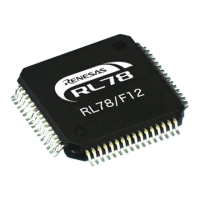
